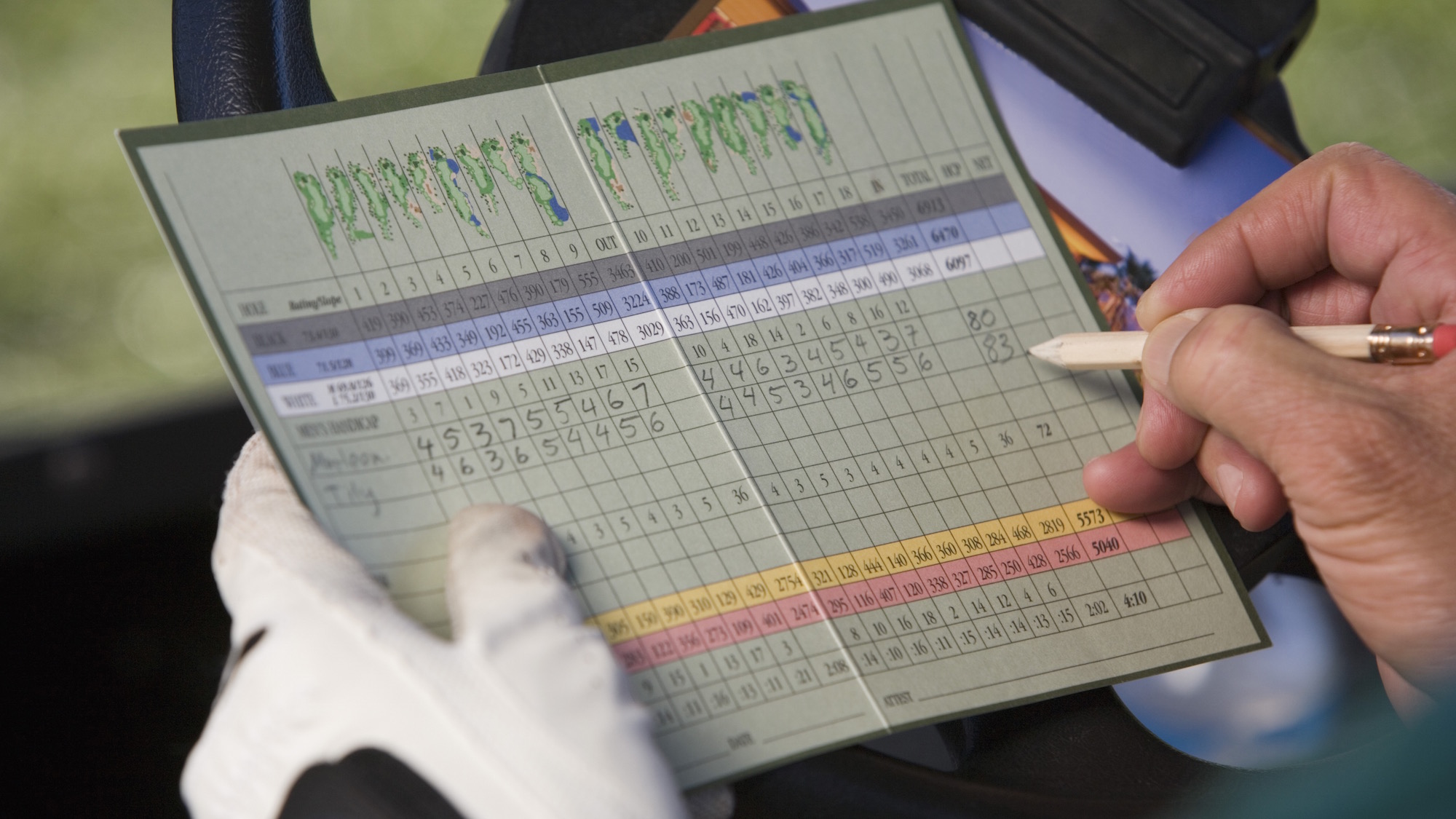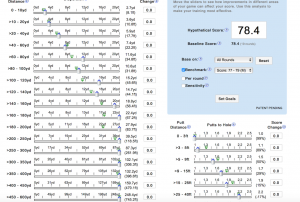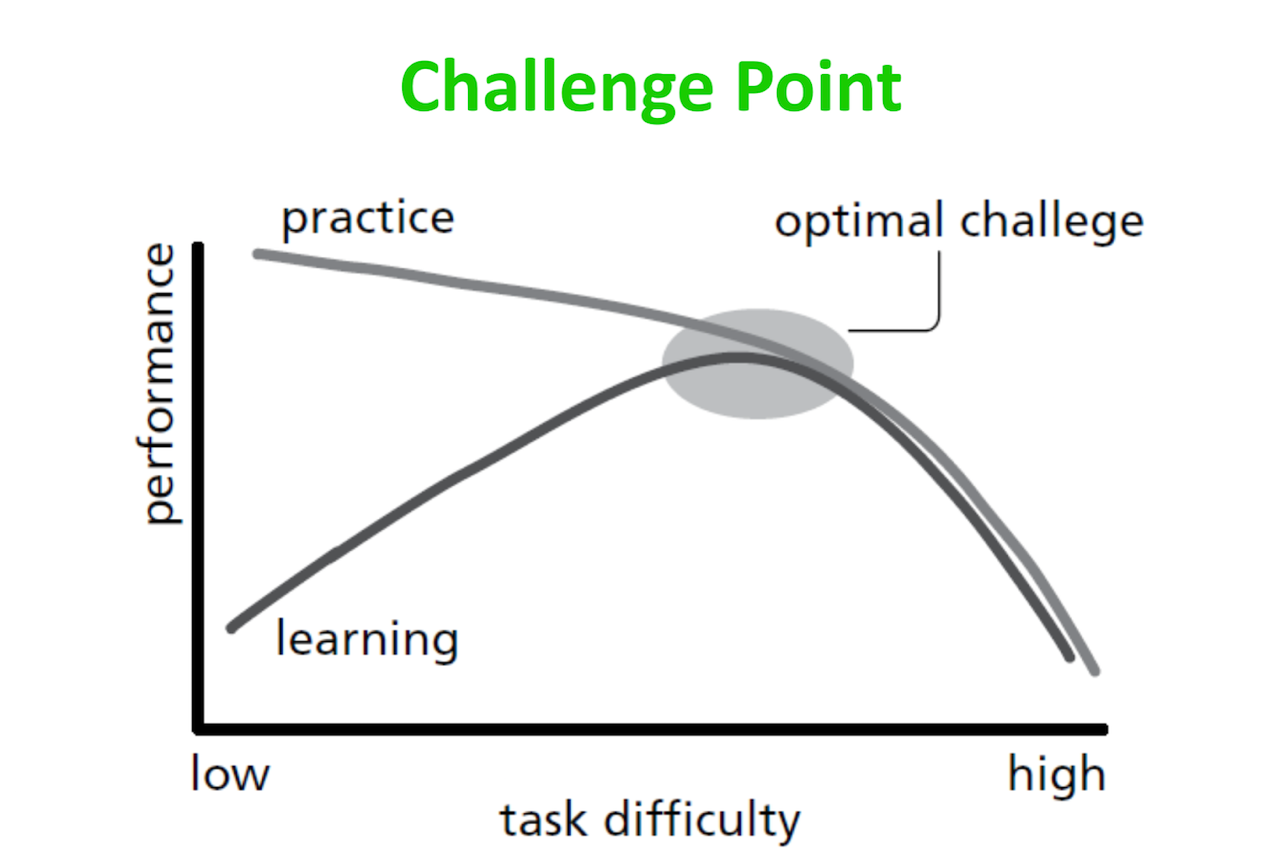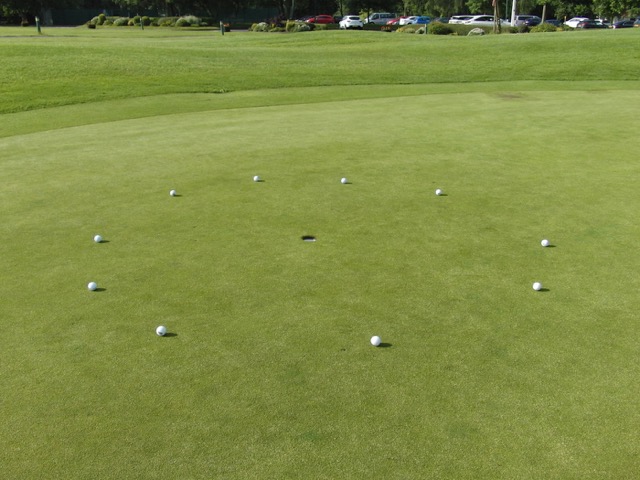Instruction
Want to break 80? Here’s what to practice

Reaching a new plateau in golf requires hours of practice, playing and thinking about your game. But all too often, as a full-time coach, players ask me how to improve their scores… but they never ask how to practice more effectively. It’s like they think I have some secret to lowering scores without having to put in the work.
Even those who come to take lessons and really care about improving often rush straight from the lesson tee to the course expecting their swing to be fixed. Most of the time, nothing is particularly “broken,” except the way those golfers are practicing. If they’re willing to practice more effectively, however, they can take their newly learned skills from the lesson tee to the course, and actually start seeing better results.
First of all, golfers need to have a keen understanding of their game and what needs to improve. I believe this knowledge should come directly from facts. I personally use a stat-tracker on a web-based program called ShotsToHole.com (pictured below), which allows me to look at dispersion from the hole, and then give it a value.

For example, Player A hits a 40-yard pitch 5 yards from the hole; that is a Break-80 number (I talk more about Break-80 numbers later in the story). So what we would do with a student is look at their entire game and work out their strengths and weaknesses. We then design an appropriate practice plan.
If there are specific changes to be made in the swing, then practice sessions should allow time to work on technique. If technique is decidedly sound, then practice should be mostly of a performance nature.
Regardless of the type of practice — technical or performance-oriented — I believe that golfers should change clubs and targets at least once in every 10 range balls. This allows our minds and bodies the best opportunity of ingraining a new movement or thought pattern.
Remember, practice needs to be…
- Planned
- Meaningful
- Purposeful
- Engaging
- Error-full
- Task-oriented
- Reverent
- Involve decision-making
- Challenging

Credit: Matt Bridge Golf
Measurement practice for me is the best form to help produce better scores on the course. For this, we would set up a game that gives us a score, and that score would be set at the optimal challenge point to maintain motivation and provide failure, which are both keys to the learning process.
So, for example, if the player wants to break 80, we would pick four key areas on which to concentrate.
Break-80 Numbers
3-5 foot putts: Score needed is 37 percent success rate to break 80, or about 4-out of-10 putts. Every putt should be hit on a different line.
20-40 yard pitch: Proximity needed is 5.3 yards or 15 feet. So let’s aim for a 6-foot proximity and see how many attempts it take to get five balls in that area. Every ball should be hit from a different angle.
140-160 yard iron shot: Proximity is 15.9 yards. So select a 5-yard wide target and see how many shots it takes to hit five balls in that gap.
Driving: Proximity is 37.9 yards: So let’s go for a 20-yard fairway and try to hit it 60 percent of the time on the range, ideally a different target each shot.
All shots are to be hit with your full pre-shot routine, and all results to be recorded and measured against previous tests. You can then play the same tasks on the course and see how the results compare.
Remember, the key to reaching your goals is not just hard work and beating balls, but practicing with pre-defined purposes.
- LIKE436
- LEGIT65
- WOW15
- LOL7
- IDHT13
- FLOP7
- OB5
- SHANK26
Instruction
The Wedge Guy: The easiest-to-learn golf basic

My golf learning began with this simple fact – if you don’t have a fundamentally sound hold on the golf club, it is practically impossible for your body to execute a fundamentally sound golf swing. I’m still a big believer that the golf swing is much easier to execute if you begin with the proper hold on the club.
As you might imagine, I come into contact with hundreds of golfers of all skill levels. And it is very rare to see a good player with a bad hold on the golf club. There are some exceptions, for sure, but they are very few and very far between, and they typically have beat so many balls with their poor grip that they’ve found a way to work around it.
The reality of biophysics is that the body moves only in certain ways – and the particulars of the way you hold the golf club can totally prevent a sound swing motion that allows the club to release properly through the impact zone. The wonderful thing is that anyone can learn how to put a fundamentally sound hold on the golf club, and you can practice it anywhere your hands are not otherwise engaged, like watching TV or just sitting and relaxing.
Whether you prefer an overlap, interlock or full-finger (not baseball!) grip on the club, the same fundamentals apply. Here are the major grip faults I see most often, in the order of the frequency:
Mis-aligned hands
By this I mean that the palms of the two hands are not parallel to each other. Too many golfers have a weak left hand and strong right, or vice versa. The easiest way to learn how to hold the club with your palms aligned properly is to grip a plain wooden ruler or yardstick. It forces the hands to align properly and shows you how that feels. If you grip and re-grip a yardstick several times, then grip a club, you’ll see that the learning curve is almost immediate.
The position of the grip in the upper/left hand
I also observe many golfers who have the butt of the grip too far into the heel pad of the upper hand (the left hand for right-handed players). It’s amazing how much easier it is to release the club through the ball if even 1/4-1/2″ of the butt is beyond the left heel pad. Try this yourself to see what I mean. Swing the club freely with just your left hand and notice the difference in its release from when you hold it at the end of the grip, versus gripping down even a half inch.
To help you really understand how this works, go to the range and hit shots with your five-iron gripped down a full inch to make the club the same length as your seven-iron. You will probably see an amazing shot shape difference, and likely not see as much distance loss as you would expect.
Too much lower (right) hand on the club
It seems like almost all golfers of 8-10 handicap or higher have the club too far into the palm of the lower hand, because that feels “good” if you are trying to control the path of the clubhead to the ball. But the golf swing is not an effort to hit at the ball – it is a swing of the club. The proper hold on the club has the grip underneath the pad at the base of the fingers. This will likely feel “weak” to you — like you cannot control the club like that. EXACTLY. You should not be trying to control the club with your lower/master hand.
Gripping too tightly
Nearly all golfers hold the club too tightly, which tenses up the forearms and prevents a proper release of the club through impact. In order for the club to move back and through properly, you must feel that the club is controlled by the last three fingers of the upper hand, and the middle two fingers of the lower hand. If you engage your thumbs and forefingers in “holding” the club, the result will almost always be a grip that is too tight. Try this for yourself. Hold the club in your upper hand only, and squeeze firmly with just the last three fingers, with the forefinger and thumb off the club entirely. You have good control, but your forearms are not tense. Then begin to squeeze down with your thumb and forefinger and observe the tensing of the entire forearm. This is the way we are made, so the key to preventing tenseness in the arms is to hold the club very lightly with the “pinchers” — the thumbs and forefingers.
So, those are what I believe are the four fundamentals of a good grip. Anyone can learn them in their home or office very quickly. There is no easier way to improve your ball striking consistency and add distance than giving more attention to the way you hold the golf club.
More from the Wedge Guy
- The Wedge Guy: Golf mastery begins with your wedge game
- The Wedge Guy: Why golf is 20 times harder than brain surgery
- The Wedge Guy: Musings on the golf ball rollback
- LIKE85
- LEGIT13
- WOW6
- LOL1
- IDHT0
- FLOP4
- OB1
- SHANK8
Instruction
Clement: Stop ripping off your swing with this drill!

Not the dreaded headcover under the armpit drill! As if your body is defective and can’t function by itself! Have you seen how incredible the human machine is with all the incredible feats of agility all kinds of athletes are accomplishing? You think your body is so defective (the good Lord is laughing his head off at you) that it needs a headcover tucked under the armpit so you can swing like T-Rex?
- LIKE0
- LEGIT2
- WOW2
- LOL0
- IDHT0
- FLOP0
- OB0
- SHANK2
Instruction
How a towel can fix your golf swing

This is a classic drill that has been used for decades. However, the world of marketed training aids has grown so much during that time that this simple practice has been virtually forgotten. Because why teach people how to play golf using everyday items when you can create and sell a product that reinforces the same thing? Nevertheless, I am here to give you helpful advice without running to the nearest Edwin Watts or adding something to your Amazon cart.
For the “scoring clubs,” having a solid connection between the arms and body during the swing, especially through impact, is paramount to creating long-lasting consistency. And keeping that connection throughout the swing helps rotate the shoulders more to generate more power to help you hit it farther. So, how does this drill work, and what will your game benefit from it? Well, let’s get into it.
Setup
You can use this for basic chip shots up to complete swings. I use this with every club in my bag, up to a 9 or 8-iron. It’s natural to create incrementally more separation between the arms and body as you progress up the set. So doing this with a high iron or a wood is not recommended.
While you set up to hit a ball, simply tuck the towel underneath both armpits. The length of the towel will determine how tight it will be across your chest but don’t make it so loose that it gets in the way of your vision. After both sides are tucked, make some focused swings, keeping both arms firmly connected to the body during the backswing and follow through. (Note: It’s normal to lose connection on your lead arm during your finishing pose.) When you’re ready, put a ball in the way of those swings and get to work.

Get a Better Shoulder Turn
Many of us struggle to have proper shoulder rotation in our golf swing, especially during long layoffs. Making a swing that is all arms and no shoulders is a surefire way to have less control with wedges and less distance with full swings. Notice how I can get in a similar-looking position in both 60° wedge photos. However, one is weak and uncontrollable, while the other is strong and connected. One allows me to use my larger muscles to create my swing, and one doesn’t. The follow-through is another critical point where having a good connection, as well as solid shoulder rotation, is a must. This drill is great for those who tend to have a “chicken wing” form in their lead arm, which happens when it becomes separated from the body through impact.
In full swings, getting your shoulders to rotate in your golf swing is a great way to reinforce proper weight distribution. If your swing is all arms, it’s much harder to get your weight to naturally shift to the inside part of your trail foot in the backswing. Sure, you could make the mistake of “sliding” to get weight on your back foot, but that doesn’t fix the issue. You must turn into your trial leg to generate power. Additionally, look at the difference in separation between my hands and my head in the 8-iron examples. The green picture has more separation and has my hands lower. This will help me lessen my angle of attack and make it easier to hit the inside part of the golf ball, rather than the over-the-top move that the other picture produces.


Stay Better Connected in the Backswing
When you don’t keep everything in your upper body working as one, getting to a good spot at the top of your swing is very hard to do. It would take impeccable timing along with great hand-eye coordination to hit quality shots with any sort of regularity if the arms are working separately from the body.
Notice in the red pictures of both my 60-degree wedge and 8-iron how high my hands are and the fact you can clearly see my shoulder through the gap in my arms. That has happened because the right arm, just above my elbow, has become totally disconnected from my body. That separation causes me to lift my hands as well as lose some of the extension in my left arm. This has been corrected in the green pictures by using this drill to reinforce that connection. It will also make you focus on keeping the lead arm close to your body as well. Because the moment either one loses that relationship, the towel falls.


Conclusion
I have been diligent this year in finding a few drills that target some of the issues that plague my golf game; either by simply forgetting fundamental things or by coming to terms with the faults that have bitten me my whole career. I have found that having a few drills to fall back on to reinforce certain feelings helps me find my game a little easier, and the “towel drill” is most definitely one of them.
- LIKE12
- LEGIT2
- WOW2
- LOL0
- IDHT0
- FLOP2
- OB0
- SHANK8
-

 19th Hole6 days ago
19th Hole6 days agoDave Portnoy places monstrous outright bet for the 2024 Masters
-

 19th Hole2 weeks ago
19th Hole2 weeks agoThings got heated at the Houston Open between Tony Finau and Alejandro Tosti. Here’s why
-

 19th Hole1 week ago
19th Hole1 week agoTiger Woods arrives at 2024 Masters equipped with a putter that may surprise you
-

 19th Hole2 weeks ago
19th Hole2 weeks agoReport: Tiger Woods has ‘eliminated sex’ in preparation for the 2024 Masters
-

 19th Hole2 days ago
19th Hole2 days agoTwo star names reportedly blanked Jon Rahm all week at the Masters
-

 19th Hole1 day ago
19th Hole1 day agoNeal Shipley presser ends in awkward fashion after reporter claims Tiger handed him note on 8th fairway
-

 19th Hole2 weeks ago
19th Hole2 weeks agoAddiction, spinal fusion, and scam artists – Everything Anthony Kim revealed in candid interview with David Feherty
-

 19th Hole2 weeks ago
19th Hole2 weeks agoAnthony Kim says doctors told him that he ‘may not have much time left’ ahead of LIV return



















Isac
Sep 17, 2017 at 6:23 am
Do one of these for breaking 60, i would want to se which numbers who would be need to break that
Mat
Sep 23, 2016 at 6:45 am
Want to break 80 even faster? Learn how to not add all your shots like the scorecard image…
453755467-46
446345437-40
46-40-86
(Not 80)
463654456-43
445346556-42
43-42-85
(Not 83)
Luke
Sep 14, 2016 at 9:36 am
This appears to be blatant plagiarism of Mark Guadagnoli’s book “Practice to Learn, Play to Win”. Author went as far as to use the exact same diagrams.
Mat
Sep 24, 2016 at 8:17 am
Yep. This is a rip off. “Optimal Challenge Point” occurs in that book 7 times. I’m fairly certain that if GolfWRX wants a recycled dialogue, they can check the forums about “blades”. I guess it makes the scorecard cheating image suddenly and ironically accurate.
Bob Jones
Sep 8, 2016 at 11:31 am
I would take out the 20-40 yard pitch, which doesn’t get hit that often by an 80 player, and substitute the greenside chip. You’ve got to get this easy up and down to break 80
mr b
Sep 6, 2016 at 2:09 pm
Good article but there are missing % goals in here that are key.
Example: what are the goals of the following drills:
20-40 yard pitch: are we aiming for 40% 30% 20% to stop within the given distance?
140-160 yard iron shot: what is the % goal here for a break 80 golfer?
thanks,
B
Vincent Lafon
Sep 5, 2016 at 2:32 pm
A good drive to avoid a bogey, a good put to get a birdie
Mats B
Sep 5, 2016 at 5:51 am
Can you please post one simular article, for breaking 70? Thanks in advance.
Shallowface
Sep 4, 2016 at 8:13 am
Whether one is trying to break 80, 90 or 100, the biggest killer is to score is poor driving, which comes from swinging too hard and too fast, both of which can be aggravated by playing from the wrong tees. And in case anyone thinks this is a criticism of the current generation, trust me, it has been this way as long as I have been playing (43 years) and before that I am sure.
The object of the game is to get the ball in the hole in the fewest strokes possible, not to hit that one drive that outdrives your friends. Three of “them” and one of “those” is a par on a par 4, and two of “those” is a bogey. Make no worse than bogey, eke out 4 or 5 pars and you are in the mid 80s overnight. From there it is a short journey to the 70s.
Play the proper tees. Swing easy at that driver and get it in play. Hit those pitches inside 15 feet as the author suggests. Fatten your wallet with your friends’ cash. The formula for success
JustWellsy
Sep 6, 2016 at 1:32 am
Good advice!
Also, the odds are the stock shaft in your driver is killing your game if you have any sort of swing speed. So if you can’t afford an upcharge (or at least heavier) shaft, then ditch the driver and stick with the 3 wood.
I know people have said this in the past, but I really do think most would benefit from a 44.5″ driver length instead of the “new standard” of 45.5″
larrybud
Sep 6, 2016 at 7:25 am
I swing as hard as I can at the ball and hit the FW 80%. “Swing easy” is just a misunderstanding of what’s going wrong in the swing.
Mr. Wedge
Sep 6, 2016 at 1:09 pm
Agree – Don’t listen to anyone who tells you to swing easy or slow. You should swing as fast as you’re able to while keeping good tempo and form.
Skept I. Cal
Sep 6, 2016 at 3:35 pm
Boy. Better driving accuracy, by far, than the top drivers on the PGA Tour.
Sounds like you’ve got some swing misunderstandings of your own if you hit the ball like that off the tee (allegedly) and we aren’t watching you on Sundays.
Jnak97
Sep 3, 2016 at 11:44 pm
Post one for breaking 70 please!!
KK
Sep 3, 2016 at 9:39 pm
Great tips. Although it’s rare, those are the areas where I remember doing well when I break 80. Mostly, I remember not getting into trouble with the driver and hitting greens in regulation with one or two fantastic saves.
Uncle Buck
Sep 3, 2016 at 5:51 pm
Yeah, I was thinking the same thing. We call it “pencil sliding,” when guys get creative with score keeping. Much like the ‘ol foot wedge. That dudes round is no where near 80. Lol!
Iutodd
Sep 3, 2016 at 3:33 pm
The star/clock drill is awesome for putts inside of 5 feet. I’m so much more confident now over those “knee-knockers” than ever before.
B Hock
Sep 3, 2016 at 11:19 am
😛
B Hock
Sep 3, 2016 at 11:18 am
Probably shouldn’t be that guy…..but….the scorecard on the picture doesn’t actually add up to 80…
Double Mocha Man
Sep 3, 2016 at 3:10 pm
You don’t know much about creative scorekeeping, do you? At least there don’t seem to be any eraser marks.
Rich
Sep 4, 2016 at 5:36 pm
Haha! That’s hilarious!
larrybud
Sep 6, 2016 at 7:10 am
I know I don’t break 80 often with two 7s on the card!